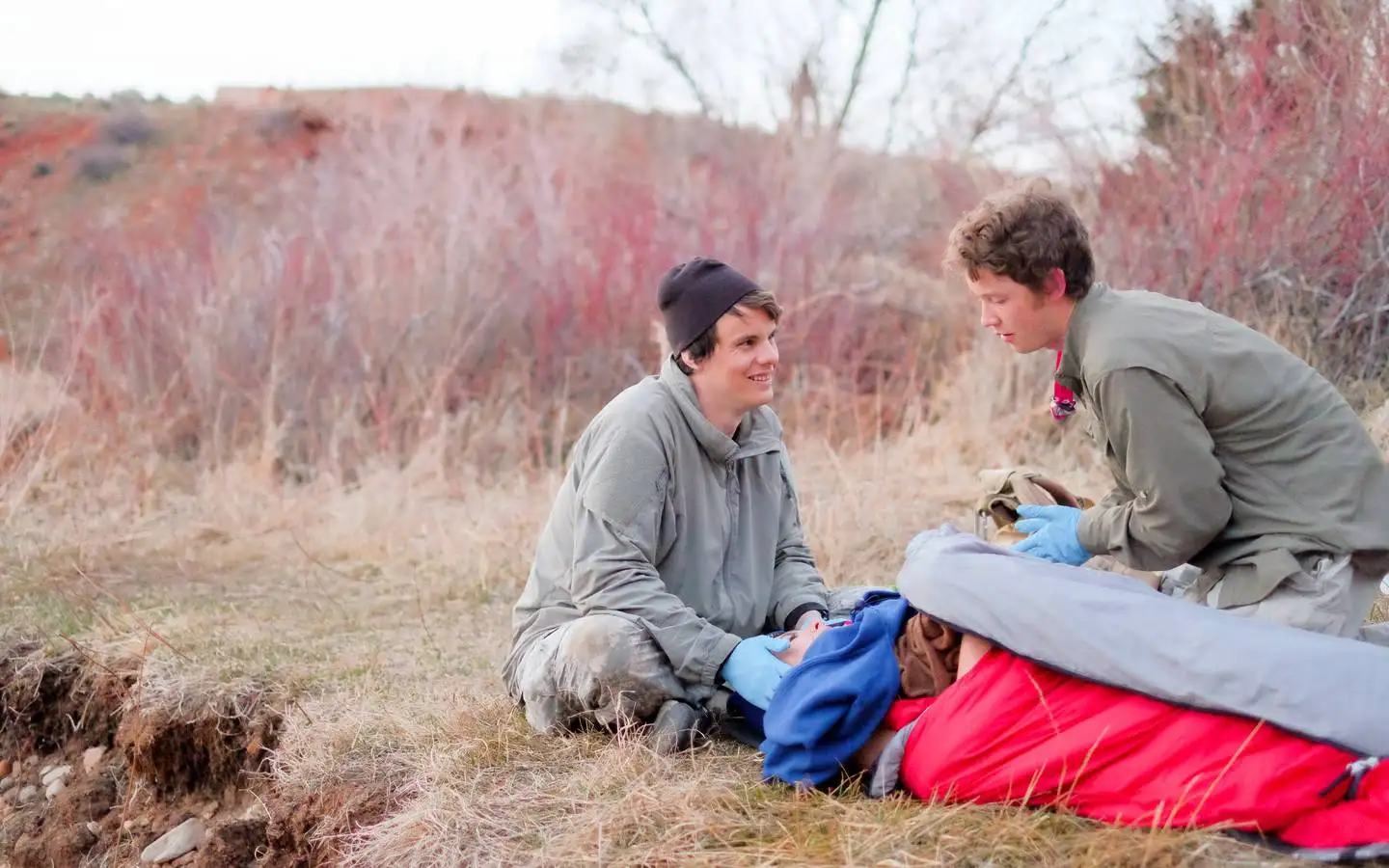The Setting
You are day hiking in local backcountry with a companion. A rider on a pale horse gallops into view. Your attempt to access a memory about a mythical pale horse passes into a realization that the rider is not in control of the horse. The horse stumbles, bucks and turns. The rider ejects from the saddle and lands on their back. You cringe at the impact. The rider pops up, walks several steps, then slowly kneels.
You and your companion stand there for a few seconds – “wow” – then approach the rider. In the back of your mind the voice of your NOLS Wilderness Medicine instructor is saying, “Walk. Look. Scene size-up.” This kicks in your Wilderness First Responder (WFR) training. The horse is long gone. You kneel next to the one patient who is obviously gasping for air and in apparent distress. Your companion says “airway…breathing, check the chest.” The airway appears open as the patient is obviously moving air. Your hands don’t find any obvious chest injury and a quick look under the rider’s shirt shows a heaving chest but no obvious injury. There is a radial pulse. The blood sweep doesn’t find anything. There isn’t an obvious injury to expose and examine.
On the edge of your self-control you hear the patient gasp “wind…knocked…out…” That makes sense. You patiently wait for the patient to slow and control their breathing. This gives you time to slow and control your breathing.
After an eternity, but probably only a minute or two, you can introduce yourself and ask the patient for permission to help. They agree.

SOAP Report
Subjective/Story/Summary
We witnessed the patient being thrown from a galloping horse, land on their back, rise to their feet, walk a few steps, then kneel. We were at the patient’s side within a minute. They were in apparent respiratory distress which appears to have been “the wind knocked out” and has now resolved. There was no loss of responsiveness.
Objective
Patient Exam:
The patient is a 31-year-old whose chief complaint is pain on the right upper back and shoulder area. The patient was found kneeling. We assisted them onto their back. The head-to-toe exam revealed a 6” by 6” bruised area over their right scapula without point tenderness. They have good CSM x4 and normal ROM in their right shoulder. There was no loss of responsiveness. They deny spine pain and the spine is not tender to touch. No other injuries are found.
Vital Signs
| TIME | 1530 hrs |
| LOR | A+Ox4 |
| HR | 130, regular, weak |
| RR | 24, regular, shallow. Initial gasping for air has resolved and breathing is now quiet and easy. |
| SCTM | pale, cool, clammy |
| B.P. | radial pulses present |
| Pupils | PERRL |
| T° | Not taken |
History
| Symptoms: | Patient is anxious and nauseated. |
| Allergies: | Denies. |
| Medications: | Denies. |
| Pertinent Hx: | None. |
| Last in/out: | Patient reports normal urine and bowel movement today, ate lunch and drank 2 liters of water today plus some tea. |
| Events: | Denies any dizziness/other symptoms prior to fall from horse. |
Stop...
What is your Assessment and Plan?
Take a few minutes to figure out your own assessment and make a plan.
Don’t cheat—no reading on without answering this first!
